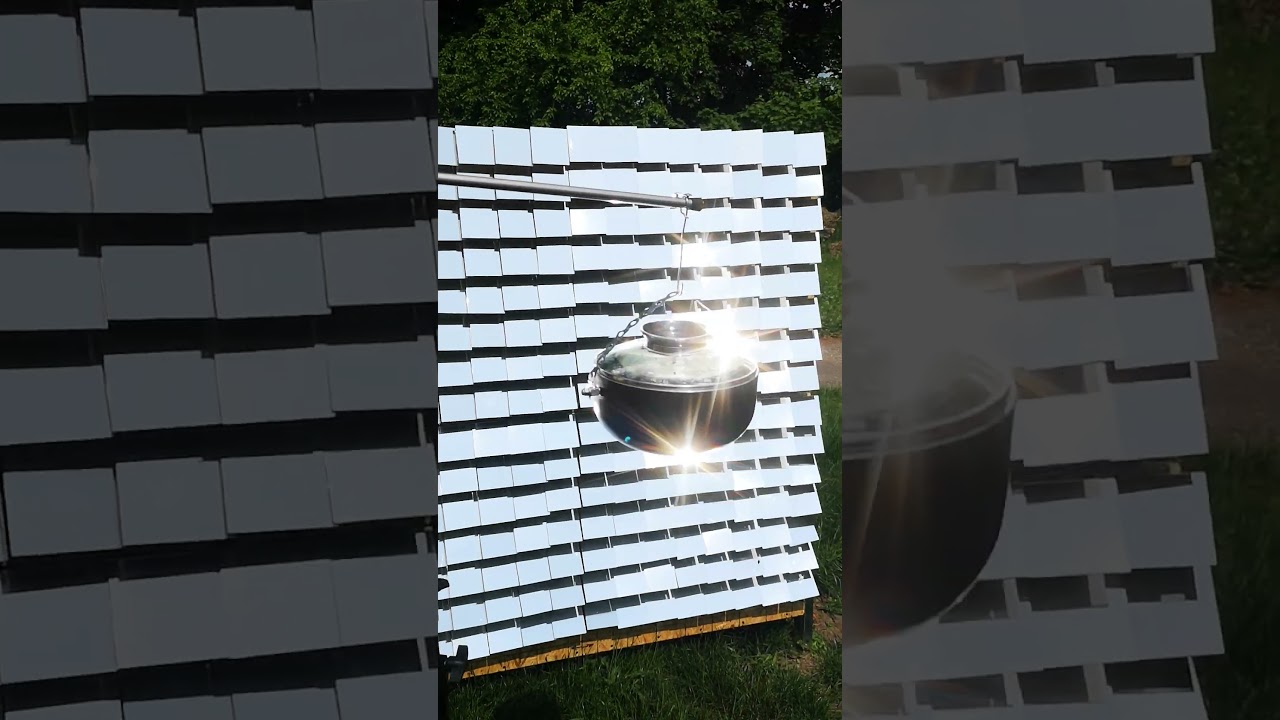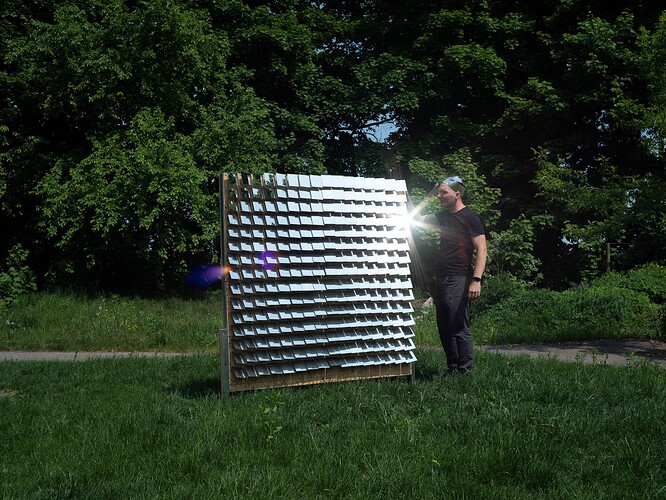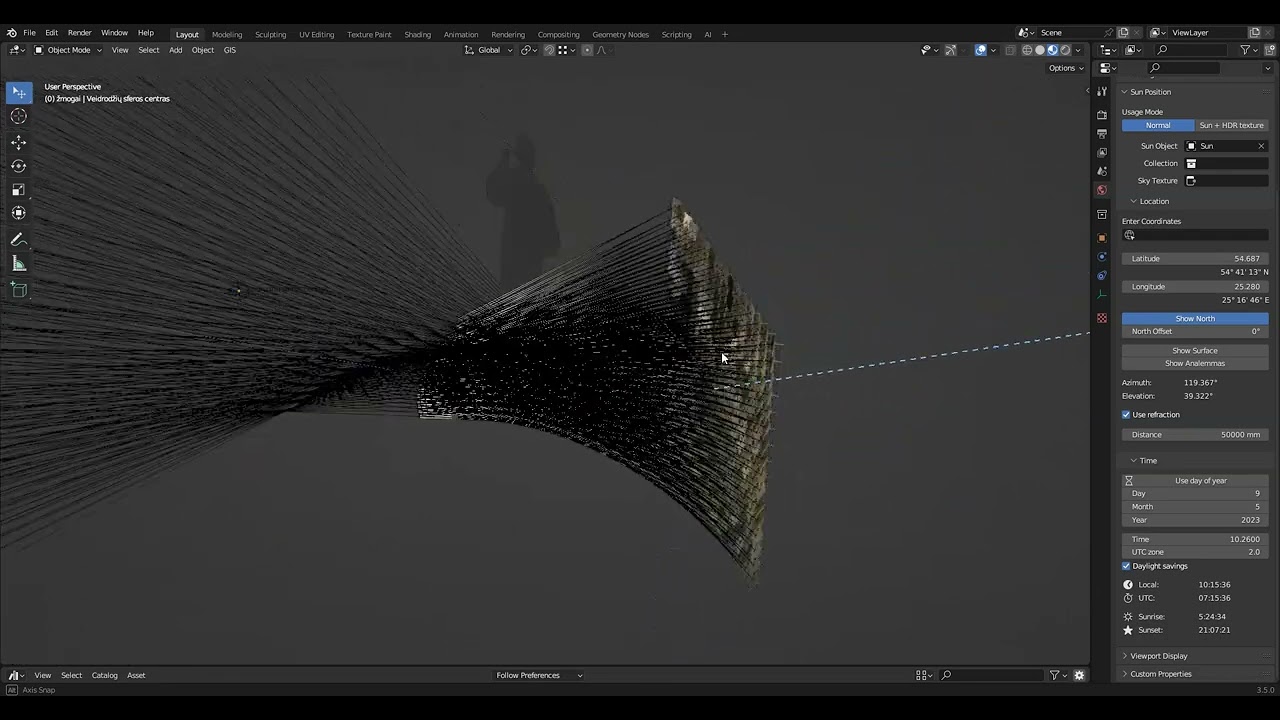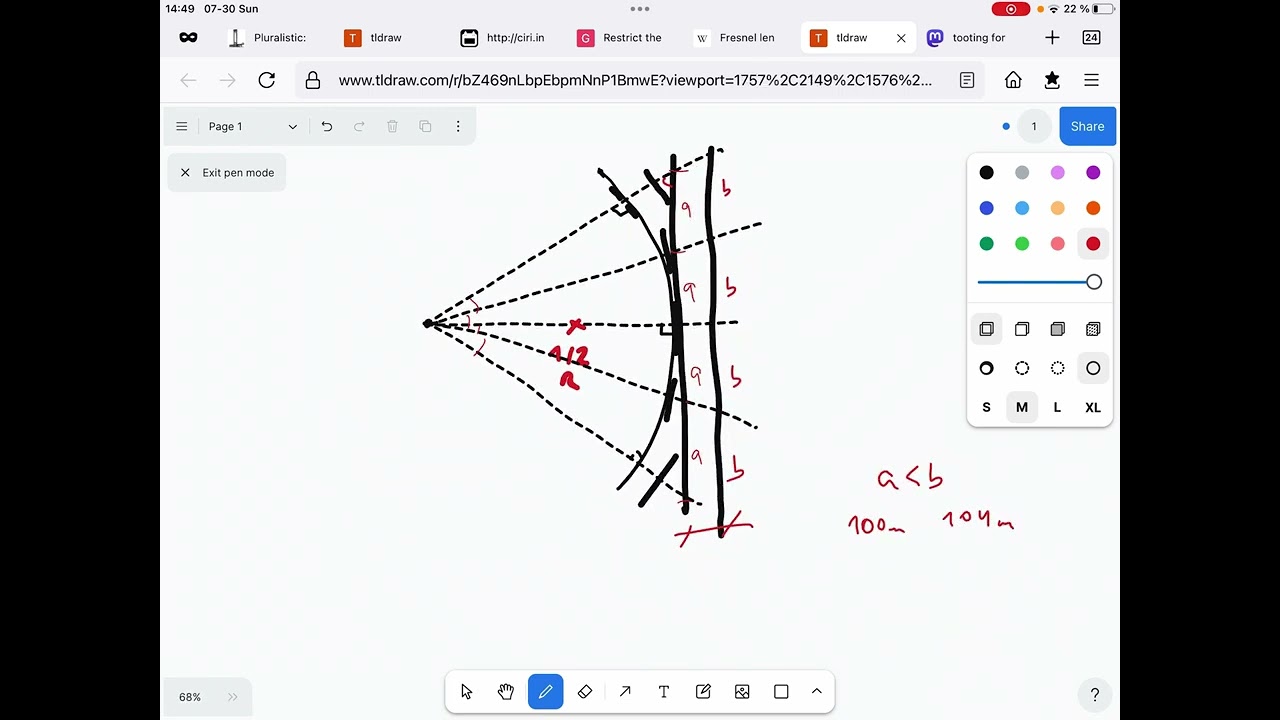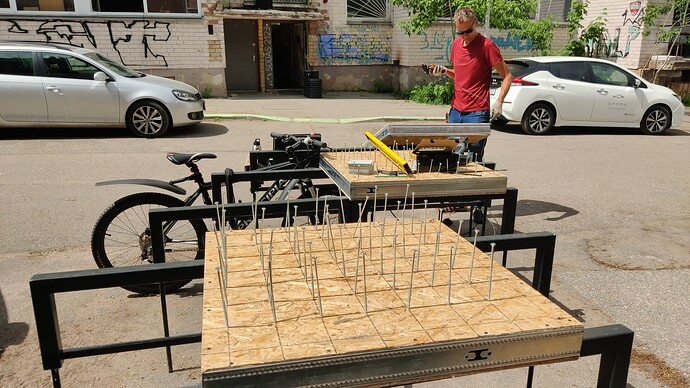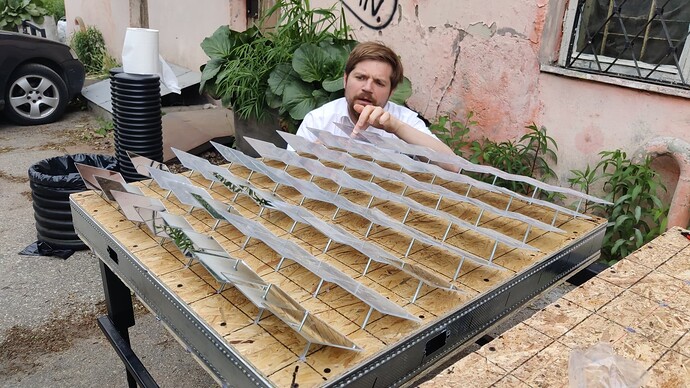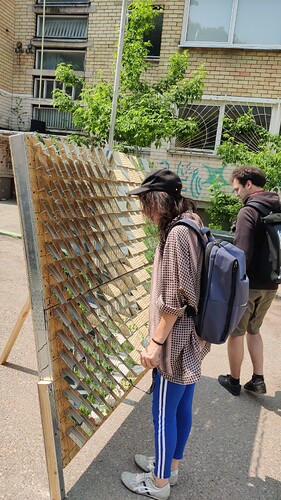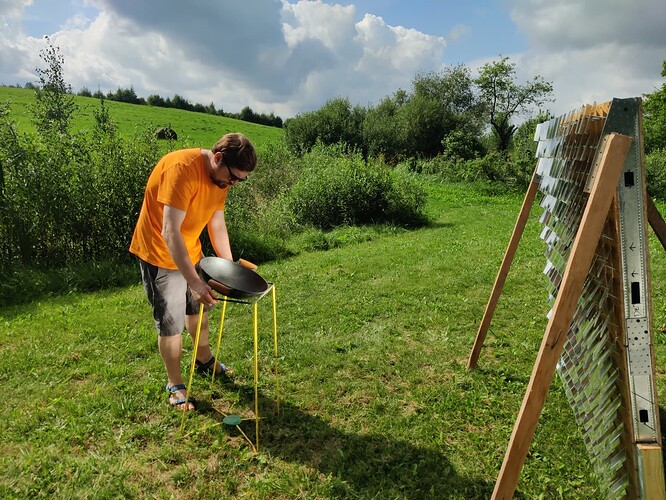We built an an experimental solar concentrator for flat surface, with architectural applications in mind. The budget was quite low, so most of it went to a plastic mirror sheet.
I made a blender simulation to see how the reflection of the actual sun would concentrate grom each of the mirrors.
The challenging part was to design it so, that the mirrors would have correct orientation without using complex and precise manufacturing process, and as little measurement as possible.
The solution was somewhat sketchy. We used geometry of two rectangular grids, which had a little different cell sizes. Putting grids in parallel planes and connecting the points gives you progressively expanding lines, which converge in a single point. I made a little video explainer when someone asked:
So we built a cheapest imaginable box with two planes, drilled holes on grid intersections and put srews in betwen the points.
Then hot-glued mirrors on top of relatively small screw heads (what gave most of imperfection here)
However, the device did not work as well as expected. We had two tests in 2023: one in a perfectly sunny day, when we tried to boil a pot with 2l of water. Probably heating one side of a relatively large pot was a bad idea in the first place - we waited for one and half hours, and the temperature was in low 80s, as I remember.
In the second test we took a heavy black wok pan, which should happily absorb most of concentrated rays. Scattered clouds were obviously an obstacle, but obviously not the only one. The dish clearly cooled down super quick. And in general, there is something wrong with the effectiveness of this device, even if concentration point seems to be relatively small - usually a bit larger than the dish.
